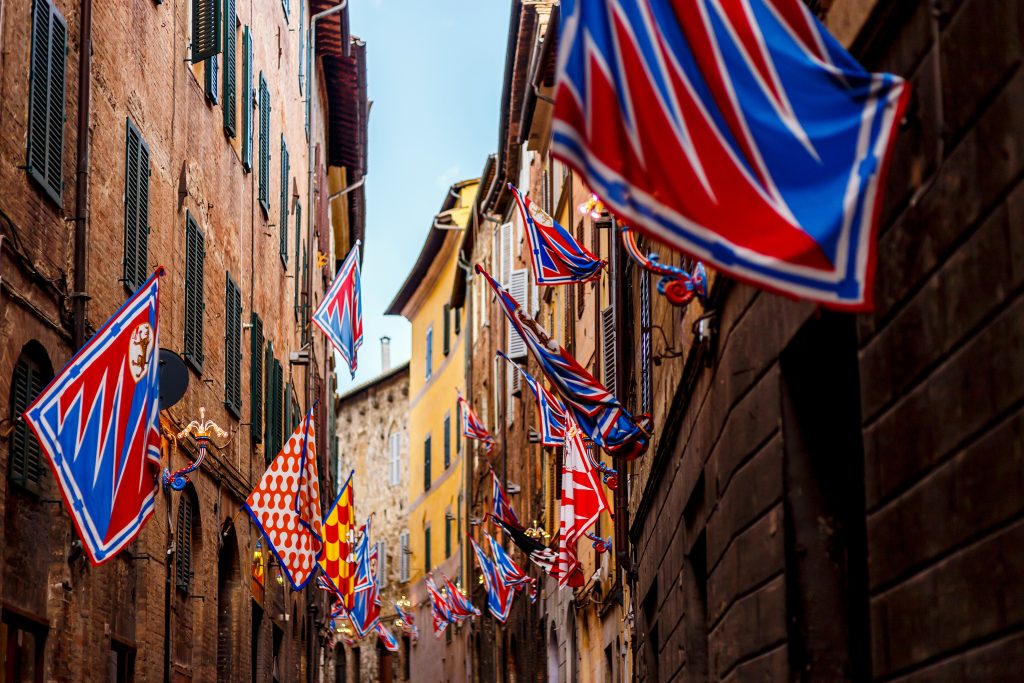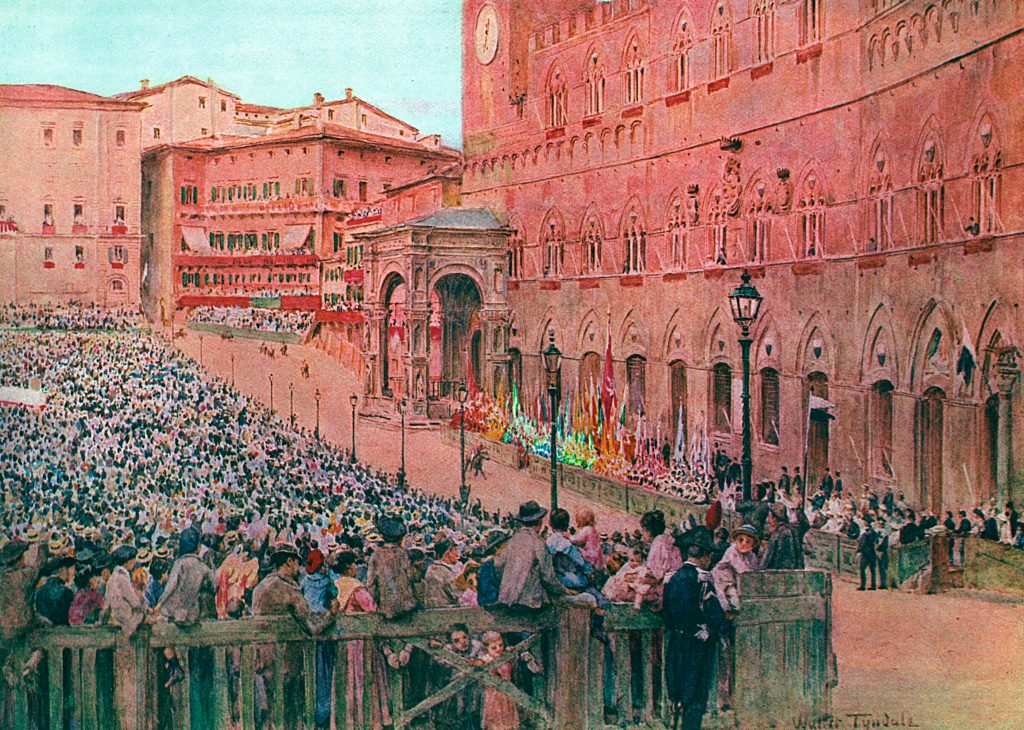
If you’re planning a trip to Italy, especially to the picturesque region of Tuscany, you won’t want to miss the heart-pounding excitement of the Palio di Siena. This age-old tradition, deeply rooted in history and passion, is a thrilling spectacle that captures the essence of Siena like nothing else. In this article, we’ll take you on a journey through the Palio’s history, its traditions, and why it’s a must-see event for anyone visiting Italy.
The Palio di Siena is a horse race like no other, dating back to the 17th century. It takes place twice a year, on July 2nd and August 16th, in Siena’s central square, Piazza del Campo. This centuries-old event originated as a way to showcase Siena’s neighborhoods, known as “contrade,” and assert their local pride and identity.
The Contrade and Race Regulations:
Siena is divided into 17 contrade, each with its unique history, symbol, and fierce loyalty. These neighborhoods compete against each other in the Palio, with their chosen jockey and horse. The competition is intense, and residents’ allegiances run deep, making the event a true reflection of Siena’s community spirit. Now, let’s delve deeper into the heart of the Palio by introducing you to all 17 contrade of Siena, each with its distinct symbol and identity:
- Aquila (Eagle)
- Bruco (Caterpillar)
- Chiocciola (Snail)
- Civetta (Owl)
- Drago (Dragon)
- Giraffa (Giraffe)
- Istrice (Porcupine)
- Leocorno (Unicorn)
- Lupa (She-Wolf)
- Montone (Ram)
- Nicchio (Shell)
- Oca (Goose)
- Onda (Wave)
- Pantera (Panther)
- Selva (Forest)
- Tartuca (Tortoise)
- Torre (Tower)
Now, let’s talk about the race regulations. The Palio is unique because it’s known for its lack of rules, creating an exhilarating, unpredictable spectacle. Here’s a glimpse of what you can expect:
- No starting gate: The horses line up along the edge of the Piazza, and the race starts when the rope, called “canapo,” is dropped.
- Whipping and blocking: Jockeys can whip rival horses and block opponents to gain an advantage, making for an intense and thrilling race.
- Bareback riding: Jockeys ride bareback, adding an element of skill and control to the race.
- Victory regardless of rider: Even if a jockey is thrown from the horse, the contrada can still win if its horse crosses the finish line first.
- Horse selection: Each contrada chooses its horse through a lottery system, adding an element of chance to the race.
These regulations, or the lack thereof, contribute to the Palio’s reputation as one of the most exhilarating and authentic cultural events you can experience in Italy. It’s a heady mix of tradition, passion, and excitement that leaves a lasting impression on all who witness it.

The race itself is a breakneck, three-lap dash around the Piazza del Campo. What sets the Palio apart is its lack of rules and regulations, resulting in a thrilling spectacle where anything goes. Jockeys often employ tactics such as whipping rival horses and blocking their competitors, making for a wild and unpredictable race.
Attending the Palio is not just about witnessing a horse race; it’s immersing yourself in a living piece of Siena’s history and culture. The days leading up to the race are filled with parades, pageantry, and medieval celebrations, creating an electric atmosphere that’s palpable in every corner of the city.
The Palio is more than a race; it’s a symbol of Sienese pride and identity. Winning the Palio is the ultimate honor for a contrada, celebrated with fervent joy and tears of triumph. It’s a testament to the enduring strength of traditions in a modern world.
The Palio di Siena is not just an event; it’s an experience that transcends time and connects you with the heart and soul of Siena. Whether you’re drawn to the thrilling race itself, the pageantry and parades, or the deep sense of community pride, the Palio is a cultural spectacle you’ll remember for a lifetime. So, when planning your trip to Italy, be sure to check the dates and immerse yourself in the exhilarating world of the Palio di Siena. It’s an adventure you won’t want to miss.

